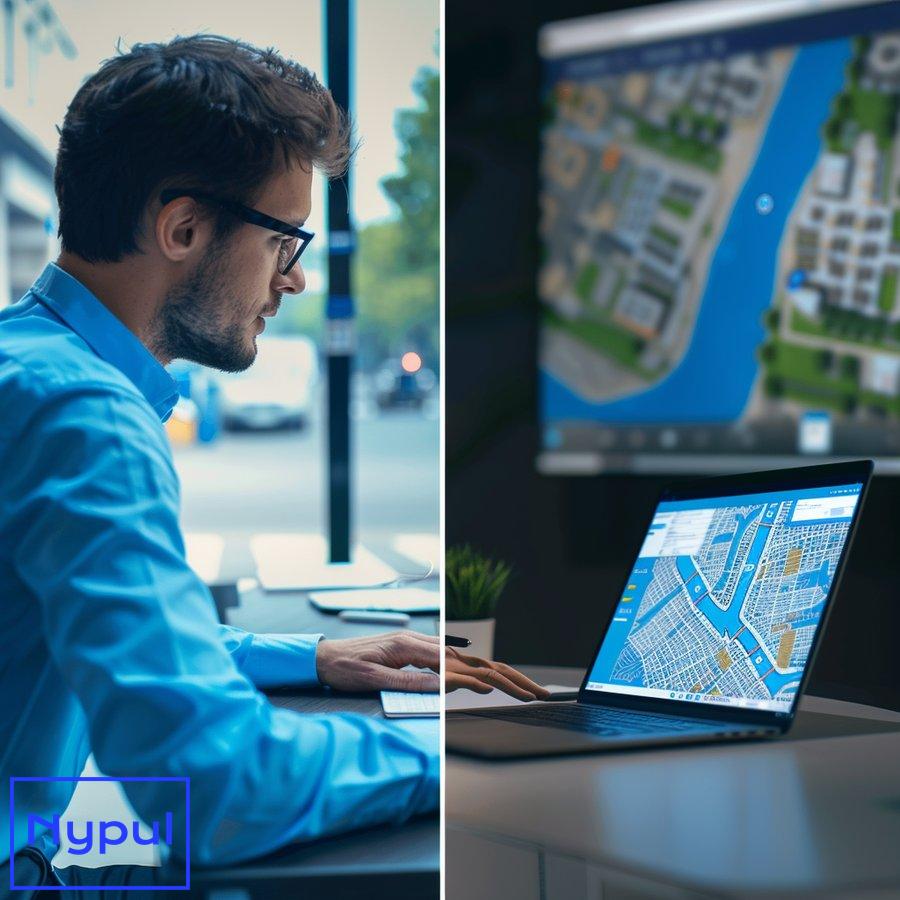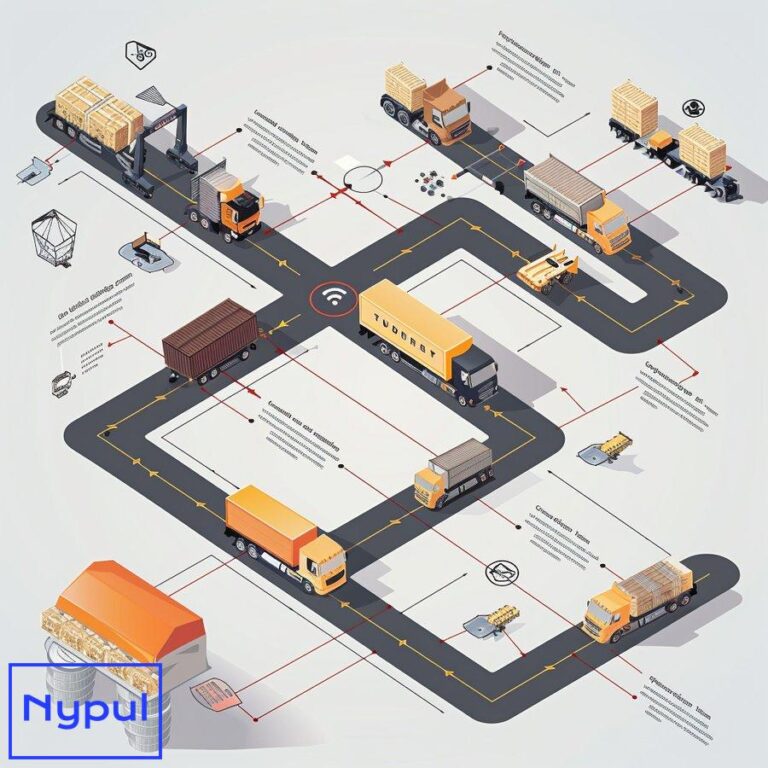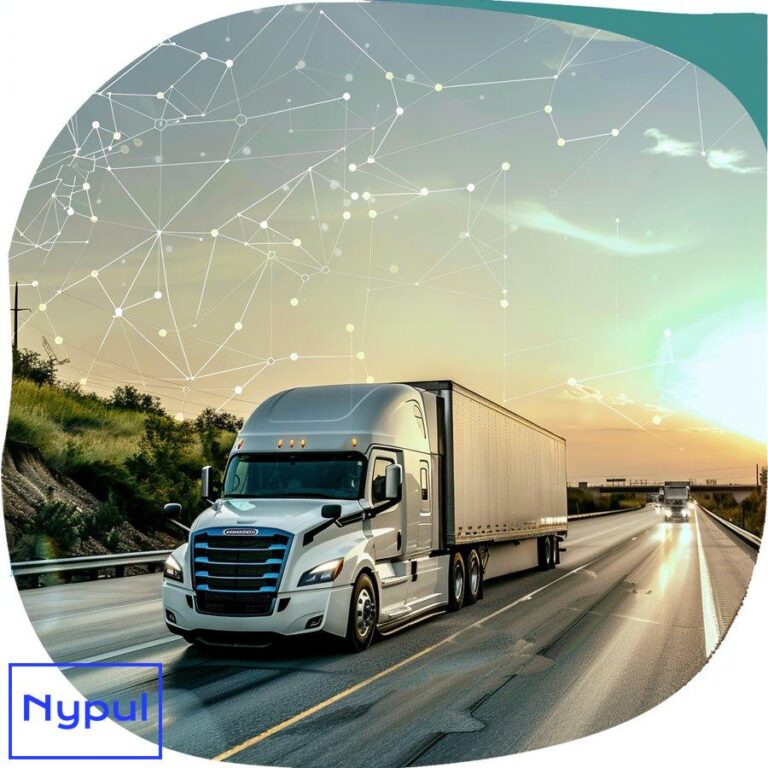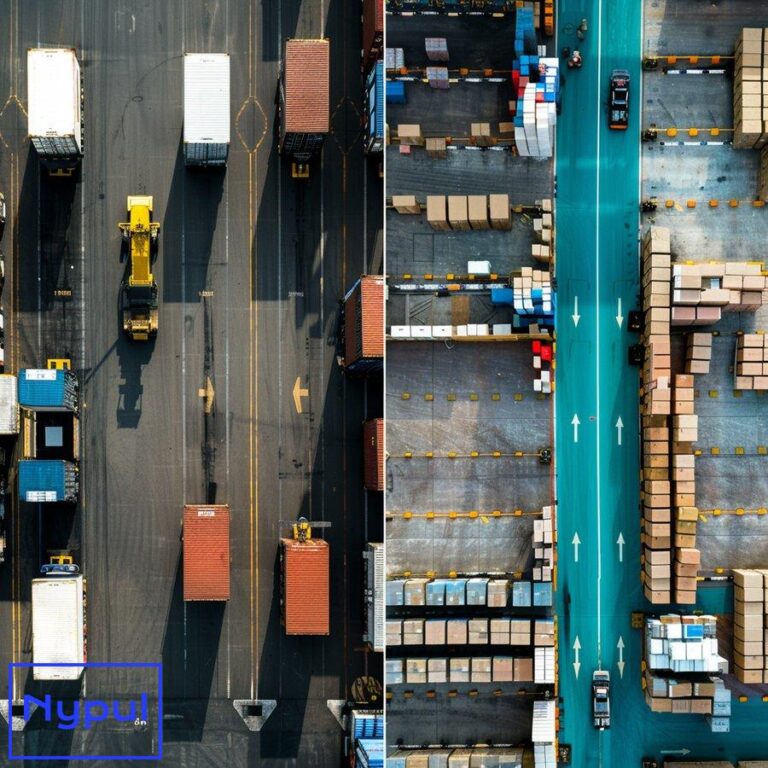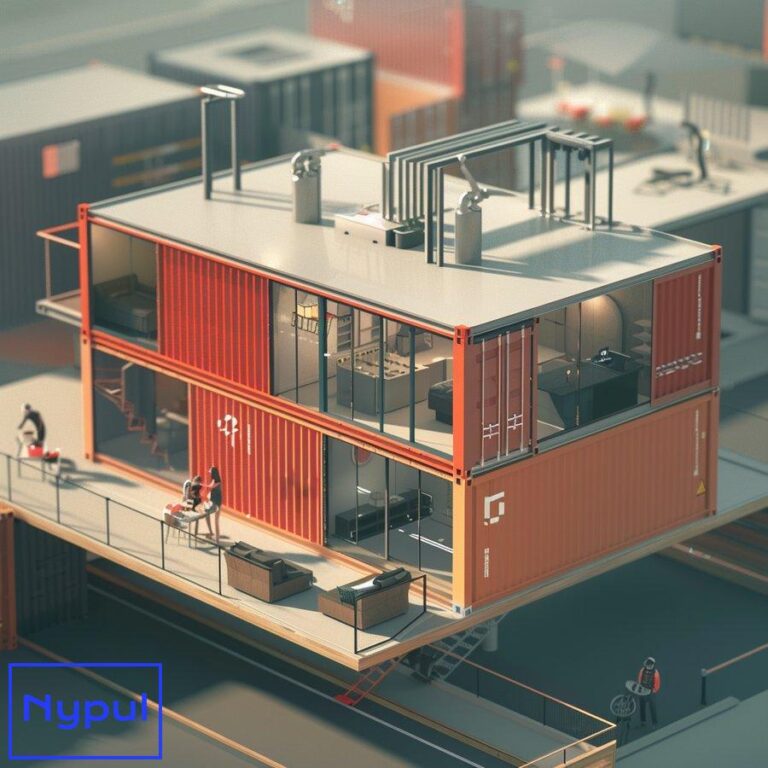What Is Geofencing in Logistics
Geofencing in logistics represents a revolutionary technology that combines geographical positioning systems (GPS) with digital mapping to create virtual boundaries around specific physical locations. This innovative approach allows logistics companies to monitor and manage their assets, vehicles, and personnel in real-time, enhancing operational efficiency and security.
At its core, geofencing involves the establishment of a virtual perimeter around a designated geographical area. This virtual fence can be as small as a single building or as large as an entire city. When a tracked object or person enters or exits this predefined zone, the geofencing system triggers a response, which can range from a simple notification to a more complex series of automated actions.
In the context of logistics, geofencing serves multiple purposes:
Asset Tracking: Geofencing enables companies to keep tabs on their valuable assets, such as vehicles, containers, or equipment. The system alerts managers when these assets enter or leave designated areas, providing crucial visibility into the supply chain.
Route Optimization: By setting up geofences along delivery routes, logistics providers can monitor driver adherence to planned paths and identify potential delays or deviations in real-time.
Security Enhancement: Geofencing can trigger alerts when vehicles or cargo enter unauthorized areas, helping to prevent theft and ensure the safety of sensitive shipments.
Automated Processes: When integrated with other systems, geofencing can automate various logistics processes. For example, it can trigger inventory updates when a shipment arrives at a warehouse or initiate billing procedures when a delivery is completed.
Compliance Monitoring: In industries with strict regulatory requirements, geofencing helps ensure that drivers adhere to approved routes and avoid restricted areas.
The implementation of geofencing in logistics relies on a combination of hardware and software components. GPS-enabled devices, such as smartphones or dedicated tracking units, provide the location data. This information is then processed by specialized software that compares the device’s position to the predefined geofence boundaries.
One of the key strengths of geofencing lies in its flexibility. Logistics companies can create geofences of various shapes and sizes to suit their specific needs. These virtual boundaries can be circular, polygonal, or even follow the exact contours of a property line. This adaptability allows for precise monitoring of complex logistics operations across diverse geographical areas.
Geofencing also offers the advantage of real-time notifications. When a tracked asset crosses a geofence boundary, the system can instantly alert relevant personnel via email, SMS, or push notifications. This immediate awareness enables quick decision-making and rapid response to potential issues or opportunities.
The integration of geofencing with other technologies further amplifies its potential in logistics. When combined with Internet of Things (IoT) sensors, for instance, geofencing can provide not just location data but also information on temperature, humidity, or shock events that may affect cargo integrity. This comprehensive approach to monitoring enhances the overall quality and reliability of logistics operations.
As the logistics industry continues to evolve, geofencing stands out as a pivotal technology in the quest for greater efficiency, security, and customer satisfaction. By providing a digital layer of awareness over physical spaces, geofencing empowers logistics providers to optimize their operations, reduce costs, and deliver superior service in an increasingly competitive global marketplace.
How Does Geofencing Work?
Geofencing technology operates on a sophisticated interplay of various components and processes, working in concert to create a powerful tool for logistics management. Understanding the mechanics behind geofencing is crucial for logistics professionals seeking to harness its full potential.
GPS and Location Services
The foundation of geofencing lies in accurate location tracking. This is primarily achieved through the Global Positioning System (GPS), a network of satellites orbiting the Earth. GPS-enabled devices, such as smartphones or dedicated tracking units, receive signals from these satellites to determine their precise location.
In urban environments or indoor settings where GPS signals may be weak, geofencing systems often supplement GPS data with other location technologies:
Wi-Fi Positioning: This method uses the known locations of Wi-Fi access points to triangulate a device’s position.
Cellular Network Triangulation: Similar to Wi-Fi positioning, this technique uses signals from cellular towers to estimate location.
Bluetooth Beacons: Small, low-energy Bluetooth transmitters can provide highly accurate indoor positioning.
Geofence Creation and Management
Once the location tracking infrastructure is in place, the next step involves creating and managing the geofences themselves. This process typically involves the following steps:
-
Defining the Geofence: Logistics managers use specialized software to draw virtual boundaries on a digital map. These boundaries can take various shapes, including circles, rectangles, or complex polygons that follow specific geographical features or property lines.
-
Setting Parameters: For each geofence, administrators define rules and triggers. These may include:
- Entry and exit alerts
- Dwell time notifications (alerts triggered when an asset remains within a geofence for a specified period)
-
Time-based restrictions (e.g., geofences that are only active during certain hours)
-
Assigning Assets: The geofencing system is then configured to monitor specific assets, such as vehicles, containers, or mobile devices carried by personnel.
Real-Time Monitoring and Data Processing
With geofences established and assets assigned, the system enters a continuous monitoring phase:
-
Location Updates: Tracked devices regularly send their location data to the geofencing system. The frequency of these updates can vary based on the specific needs of the operation, balancing accuracy with battery life and data usage considerations.
-
Data Analysis: The geofencing software compares the received location data against the defined geofence boundaries in real-time.
-
Event Detection: When a tracked asset crosses a geofence boundary or meets other predefined criteria, the system registers this as an event.
-
Alert Generation: Based on the detected events and the rules set for each geofence, the system generates appropriate alerts or triggers automated actions.
Integration and Response
The power of geofencing in logistics lies not just in its ability to detect events but also in how it integrates with other systems to drive meaningful actions:
- Notification Systems: Geofencing platforms typically integrate with various communication channels to deliver alerts. This may include:
- Email notifications
- SMS messages
- Push notifications to mobile apps
-
Alerts within logistics management dashboards
-
Logistics Management Systems: Geofencing data can be fed directly into broader logistics management platforms, updating estimated arrival times, triggering inventory adjustments, or initiating billing processes.
-
Automated Workflows: Advanced geofencing implementations can trigger complex, automated workflows. For example, when a delivery vehicle enters a warehouse geofence, it might automatically:
- Update the shipment status in the tracking system
- Notify warehouse staff to prepare for unloading
-
Adjust temperature controls if the cargo requires specific environmental conditions
-
Data Analytics: The wealth of data generated by geofencing systems can be analyzed to identify patterns, optimize routes, and improve overall logistics efficiency.
Privacy and Security Considerations
While geofencing offers powerful capabilities, it’s crucial to implement robust security measures:
-
Data Encryption: All location data and communications should be encrypted to prevent unauthorized access.
-
Access Controls: Geofencing systems should employ strict user authentication and role-based access controls to ensure that sensitive location data is only accessible to authorized personnel.
-
Compliance: Logistics companies must ensure their geofencing practices comply with relevant data protection regulations, such as GDPR in the European Union.
-
Transparency: When geofencing is used to track personnel, clear policies and consent procedures should be in place to address privacy concerns.
The intricate workings of geofencing technology exemplify the sophisticated tools now at the disposal of logistics professionals. By leveraging GPS, advanced software algorithms, and seamless integrations, geofencing transforms abstract geographical boundaries into powerful triggers for real-world actions. This capability not only enhances the efficiency and security of logistics operations but also paves the way for more responsive, data-driven supply chain management strategies.
What Are the Different Types of Geofencing Technologies?
Geofencing in logistics encompasses a variety of technologies, each with its own strengths and ideal use cases. Understanding these different types allows logistics professionals to select the most appropriate solution for their specific needs. Let’s explore the primary categories of geofencing technologies and their applications in the logistics sector.
GPS-Based Geofencing
GPS-based geofencing represents the most widely used and versatile form of this technology. It relies on the Global Positioning System to track assets and define geofences.
Key Features:
– High accuracy in outdoor environments
– Global coverage
– Ability to create large geofences (city-wide or larger)
Logistics Applications:
– Long-haul trucking route monitoring
– Port and terminal management
– Large warehouse yard tracking
Limitations:
– Reduced accuracy in urban canyons or indoors
– Higher power consumption compared to some other methods
Cell-ID Geofencing
Cell-ID geofencing utilizes cellular network infrastructure to determine location, making it less precise but more energy-efficient than GPS.
Key Features:
– Works in areas with cellular coverage
– Lower battery drain on mobile devices
– Functional indoors and in urban environments
Logistics Applications:
– Broad area tracking for less time-sensitive shipments
– Battery-efficient tracking for long-term asset monitoring
Limitations:
– Lower accuracy compared to GPS (typically 100-500 meters)
– Dependent on cellular network coverage
Wi-Fi Geofencing
This technology leverages Wi-Fi access points to create geofences, offering a good balance between accuracy and power efficiency, especially in urban and indoor environments.
Key Features:
– Higher accuracy than Cell-ID in areas with dense Wi-Fi networks
– Works well indoors
– More energy-efficient than GPS
Logistics Applications:
– Warehouse inventory tracking
– Last-mile delivery monitoring in urban areas
– Indoor logistics operations in large facilities
Limitations:
– Requires a database of Wi-Fi access point locations
– Accuracy can vary depending on the density of Wi-Fi networks
Bluetooth Low Energy (BLE) Geofencing
BLE geofencing uses Bluetooth beacons to create highly accurate, small-scale geofences, ideal for precise indoor tracking.
Key Features:
– Extremely high accuracy (down to centimeters)
– Very low power consumption
– Excellent for creating micro-geofences
Logistics Applications:
– Precise inventory location tracking in warehouses
– Loading dock management
– High-value asset monitoring in secure facilities
Limitations:
– Limited range (typically up to 70 meters)
– Requires installation and maintenance of beacon infrastructure
RFID Geofencing
Radio-Frequency Identification (RFID) technology can be used to create very precise geofences, particularly useful for inventory management and access control.
Key Features:
– Extremely high accuracy for close-range detection
– Passive RFID tags require no power source
– Can handle high volumes of tagged items simultaneously
Logistics Applications:
– Automated inventory counts in warehouses
– Theft prevention for high-value goods
– Access control for secure areas in logistics facilities
Limitations:
– Limited range (typically a few meters for passive RFID)
– Requires specialized RFID readers
Hybrid Geofencing Systems
Many modern geofencing solutions in logistics employ a hybrid approach, combining multiple technologies to leverage their respective strengths.
Key Features:
– Adaptive accuracy based on available technologies
– Seamless transition between outdoor and indoor environments
– Optimized power consumption
Logistics Applications:
– End-to-end supply chain tracking
– Comprehensive fleet management solutions
– Advanced warehouse management systems
Limitations:
– More complex to implement and maintain
– Potentially higher initial costs
To illustrate the comparative strengths of these technologies, consider the following table:
| Technology | Accuracy | Power Efficiency | Indoor Performance | Typical Range | Best For |
|---|---|---|---|---|---|
| GPS | High | Low | Poor | Global | Outdoor, long-distance tracking |
| Cell-ID | Low | High | Moderate | Wide area | Battery-efficient, broad area monitoring |
| Wi-Fi | Moderate | Moderate | Good | Urban areas | Indoor and urban logistics |
| BLE | Very High | Very High | Excellent | Short range | Precise indoor tracking |
| RFID | Extremely High | N/A (passive) | Excellent | Very short range | Inventory and access control |
| Hybrid | Adaptive | Optimized | Excellent | Varied | Comprehensive logistics solutions |
The choice of geofencing technology in logistics depends on various factors, including the specific use case, the environment in which tracking is required, power constraints, and the desired level of accuracy. GPS-based systems remain the go-to choice for broad, outdoor tracking needs, while BLE and RFID technologies excel in creating precise geofences for indoor and short-range applications.
As logistics operations become increasingly complex, spanning diverse environments and requiring different levels of precision at various stages, hybrid geofencing systems are gaining prominence. These sophisticated solutions can seamlessly transition between different technologies, ensuring optimal performance across the entire supply chain.
The ongoing evolution of these technologies, coupled with advancements in areas such as artificial intelligence and the Internet of Things, continues to expand the capabilities and applications of geofencing in logistics. This progression empowers logistics professionals to implement increasingly sophisticated, efficient, and responsive tracking solutions, driving improvements in supply chain visibility, security, and overall operational effectiveness.
How is Geofencing Applied in Logistics Operations?

Geofencing technology has found numerous applications in the logistics industry, revolutionizing operations across various segments of the supply chain. Its ability to create virtual boundaries and trigger location-based actions has opened up new possibilities for efficiency, security, and customer service. Let’s explore the key applications of geofencing in logistics operations.
Fleet Management and Route Optimization
Geofencing plays a crucial role in modern fleet management systems, offering real-time insights into vehicle locations and movements.
Key Applications:
– Route Adherence Monitoring: Geofences set along planned routes help managers ensure drivers stick to predetermined paths, improving efficiency and reducing unauthorized detours.
– Dynamic Route Optimization: By analyzing entry and exit times for various geofences, companies can identify traffic patterns and optimize routes in real-time.
– Driver Behavior Analysis: Geofencing data can reveal speeding incidents, excessive idling, or unauthorized stops, contributing to improved safety and fuel efficiency.
Warehouse and Yard Management
In warehouse and distribution center environments, geofencing enhances inventory control and operational efficiency.
Key Applications:
– Automated Check-In/Check-Out: Geofences around loading docks can trigger automatic notifications when trucks arrive or depart, streamlining the loading and unloading process.
– Inventory Tracking: By creating geofences within warehouses, companies can monitor the movement of goods between different zones, improving inventory accuracy.
– Equipment Management: Geofencing helps track the location and usage of forklifts, pallet jacks, and other warehouse equipment, optimizing resource allocation.
Last-Mile Delivery Optimization
Geofencing technology is particularly valuable in the challenging last-mile delivery segment, enhancing efficiency and customer experience.
Key Applications:
– Precise Delivery Notifications: Geofences around delivery addresses trigger automated notifications to customers when a package is nearby, improving delivery success rates.
– Proof of Delivery: Geofencing can automatically record when a delivery vehicle enters and exits a customer’s address, providing digital proof of delivery.
– Dynamic Delivery Scheduling: By analyzing dwell times within delivery geofences, companies can refine their scheduling algorithms for more accurate delivery windows.
Supply Chain Visibility and Risk Management
Geofencing contributes significantly to overall supply chain visibility, helping companies manage risks and respond to disruptions.
Key Applications:
– Cargo Monitoring: Geofences around sensitive areas or along international borders can trigger alerts for potential security risks or customs requirements.
– Temperature-Controlled Logistics: Combined with IoT sensors, geofencing can monitor environmental conditions as goods move through different climate zones, ensuring product integrity.
– Delay Prediction: By analyzing historical geofence data, companies can predict potential delays at specific points in the supply chain and take proactive measures.
Compliance and Regulatory Adherence
In industries with strict regulatory requirements, geofencing helps ensure compliance and provides documentation for audits.
Key Applications:
– Hours of Service Compliance: Geofences around rest areas or depots can help track driver hours and ensure compliance with regulations.
– Restricted Area Avoidance: For hazardous materials transport, geofencing can alert drivers if they approach restricted zones, helping maintain compliance with safety regulations.
– Customs and Border Control: Geofences at border crossings can trigger automated customs documentation processes, streamlining international logistics.
Asset and Container Tracking
Geofencing is instrumental in tracking high-value assets and shipping containers throughout their journey.
Key Applications:
– Theft Prevention: Geofences around storage facilities or along transport routes can trigger alerts if assets move unexpectedly, aiding in quick response to potential theft.
– Maintenance Scheduling: By tracking the movement and usage of assets through various geofences, companies can implement more efficient, usage-based maintenance schedules.
– Container YarContainer Yard Management**
Geofencing is instrumental in tracking high-value assets and shipping containers throughout their journey.
Key Applications:
-
Theft Prevention: Geofences around storage facilities or along transport routes can trigger alerts if assets move unexpectedly, aiding in quick response to potential theft.
-
Maintenance Scheduling: By tracking the movement and usage of assets through various geofences, companies can implement more efficient, usage-based maintenance schedules.
-
Container Yard Optimization: Geofencing can help manage the flow of containers in and out of yards, providing real-time data on container locations and optimizing space utilization.
Customer Experience Enhancement
In a competitive logistics landscape, customer experience is paramount. Geofencing technology enhances customer interactions by providing timely information and improving service delivery.
Key Applications:
-
Real-Time Tracking Updates: Customers can receive notifications when their shipments enter or exit geofenced areas, providing visibility into the delivery process.
-
Personalized Notifications: Geofencing allows companies to send tailored messages to customers based on their location, such as promotional offers or service updates.
-
Improved Communication: Automated alerts regarding delays or changes in delivery status help keep customers informed, enhancing overall satisfaction.
The diverse applications of geofencing in logistics illustrate its transformative impact on supply chain operations. By leveraging this technology, logistics providers can enhance efficiency, improve security, and elevate customer experiences. As the logistics industry continues to evolve, the strategic implementation of geofencing will become increasingly critical for maintaining a competitive edge.
What Are the Benefits of Geofencing for Supply Chain Management?
Geofencing technology offers a multitude of benefits for supply chain management, enhancing operational efficiency, security, and customer satisfaction. Understanding these advantages is essential for logistics professionals looking to optimize their operations. Here are some key benefits:
Enhanced Visibility

Geofencing provides real-time visibility into the location and status of assets throughout the supply chain.
-
Asset Tracking: Companies can monitor the movement of vehicles, containers, and equipment in real-time, allowing for better resource allocation and planning.
-
Operational Transparency: Enhanced visibility into logistics operations helps identify bottlenecks and inefficiencies, enabling proactive management.
Improved Efficiency
By automating processes and providing actionable insights, geofencing significantly improves operational efficiency.
-
Route Optimization: Real-time data allows for dynamic route adjustments based on traffic conditions or delays, reducing fuel consumption and delivery times.
-
Automated Notifications: Geofencing triggers alerts for key events (e.g., arrivals or departures), streamlining communication and reducing manual tracking efforts.
Cost Reduction
Implementing geofencing can lead to substantial cost savings across various aspects of logistics operations.
-
Fuel Savings: Optimized routes reduce unnecessary mileage, leading to lower fuel expenses.
-
Labor Efficiency: Automation of routine tasks minimizes labor costs associated with manual tracking and reporting.
-
Reduced Theft Losses: Enhanced security measures through geofencing help prevent asset loss due to theft or unauthorized access.
Increased Security
Geofencing enhances security measures by providing real-time alerts for unauthorized movements or breaches.
-
Theft Prevention: Immediate notifications when assets enter restricted areas allow for quick intervention to prevent theft or loss.
-
Compliance Monitoring: Geofences help ensure compliance with regulations by monitoring vehicle movements in restricted zones or hazardous areas.
Better Customer Experience
Geofencing technology contributes to improved customer satisfaction through enhanced communication and service delivery.
-
Timely Updates: Customers receive real-time notifications about their shipments’ status, leading to greater transparency and trust.
-
Personalized Interactions: Companies can tailor communications based on customers’ locations or preferences, creating a more engaging experience.
What Common Challenges Does Geofencing Address?
While geofencing offers numerous benefits, it also addresses several common challenges faced by logistics companies. Understanding these challenges helps organizations leverage geofencing effectively as part of their operational strategy. Here are some key challenges that geofencing technology can mitigate:
Inefficient Asset Tracking
Many logistics companies struggle with accurately tracking their assets throughout the supply chain. Traditional tracking methods often lead to delays and inaccuracies.
- Solution with Geofencing: Geofencing provides real-time location data for vehicles and containers, ensuring accurate tracking and reducing delays caused by lost or misplaced assets.
High Operational Costs
Logistics operations can be costly due to fuel consumption, labor expenses, and inefficiencies in route planning.
- Solution with Geofencing: By optimizing routes based on real-time data and automating notifications for arrivals or departures, geofencing reduces operational costs associated with fuel consumption and labor inefficiencies.
Lack of Visibility
Limited visibility into supply chain operations can hinder decision-making and lead to missed opportunities for improvement.
- Solution with Geofencing: Geofencing enhances visibility by providing real-time updates on asset locations and movements. This transparency allows managers to identify bottlenecks and optimize processes effectively.
Security Risks
The logistics industry is vulnerable to theft, vandalism, and unauthorized access to assets. Traditional security measures may not provide adequate protection against these risks.
- Solution with Geofencing: Geofences can trigger alerts when assets enter restricted areas or deviate from approved routes. This proactive approach enhances security measures and reduces the risk of theft or loss.
How Can Companies Implement Geofencing Effectively?

Implementing geofencing technology in logistics requires careful planning and execution. Here are key steps companies should follow to ensure effective implementation:
Define Clear Objectives
Before implementing geofencing technology, organizations should clearly define their objectives. This includes identifying specific pain points they aim to address through geofencing solutions—such as improving asset tracking accuracy or enhancing route optimization capabilities.
By establishing measurable goals upfront (e.g., reducing delivery times by 20% within six months), companies can better assess the effectiveness of their geofencing initiatives over time.
Select the Right Technology
Choosing the appropriate geofencing technology is crucial for successful implementation. Companies should evaluate various options based on factors such as accuracy requirements, environmental considerations (indoor vs. outdoor), power consumption needs, and budget constraints.
A hybrid approach that combines multiple technologies may offer enhanced flexibility and performance across diverse operational scenarios.
Integrate with Existing Systems
For maximum effectiveness, geofencing solutions should be integrated seamlessly with existing logistics management systems (LMS) or enterprise resource planning (ERP) platforms.
This integration allows for streamlined data sharing between systems—enabling real-time updates on asset locations while triggering automated workflows based on predefined rules (e.g., updating inventory levels when goods enter a warehouse).
Additionally, integrating geofence data into analytics platforms empowers organizations to derive actionable insights from historical trends—informing future decision-making processes related to supply chain optimization efforts.
What Are the Key Considerations for Using Geofencing in Logistics?
When utilizing geofencing technology in logistics operations, several key considerations must be taken into account:
- Data Privacy Regulations
- Organizations must ensure compliance with relevant data privacy laws (e.g., GDPR) when collecting location data from employees or customers.
-
Clear policies regarding data usage should be communicated transparently to maintain trust among stakeholders involved in logistics operations.
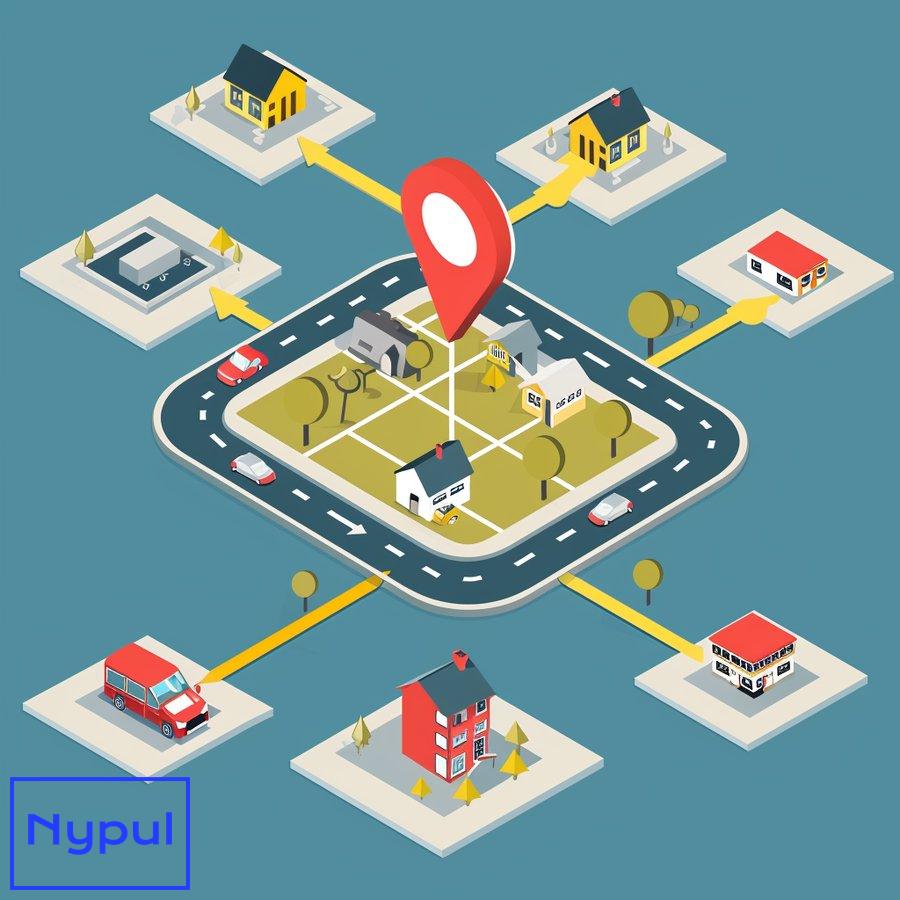
-
System Reliability
- The reliability of GPS signals may vary depending on environmental factors such as urban buildings obstructing satellite signals.
-
Companies should evaluate backup systems (e.g., Wi-Fi positioning) that maintain accuracy during signal disruptions—ensuring continuous tracking capabilities across all scenarios.
-
User Training
- Employees must be adequately trained on how to use geofencing tools effectively—understanding how alerts work while interpreting location-based data accurately.
-
Ongoing training sessions should be scheduled regularly as new features are introduced—ensuring staff remain proficient in leveraging these technologies over time.
-
Scalability
- As businesses grow over time—expanding their fleet size while adding new warehouses—their chosen geofence solution must scale accordingly without compromising performance.
-
Organizations should consider cloud-based solutions that offer flexibility regarding resource allocation while accommodating increasing demands seamlessly.
-
Cost-Benefit Analysis
- Before implementing any new technology—including geofence systems—companies should conduct thorough cost-benefit analyses assessing potential returns against initial investments required for deployment.
- This analysis helps prioritize investments based on expected outcomes while aligning them strategically with overall business objectives moving forward.
In conclusion, geofencing technology has emerged as a transformative force within logistics operations—addressing common challenges while unlocking numerous benefits across supply chains globally. By understanding its applications alongside best practices for implementation—organizations can harness its full potential effectively—driving improvements across multiple facets ranging from operational efficiency through enhanced customer experience ultimately leading toward sustained growth within competitive markets today!
